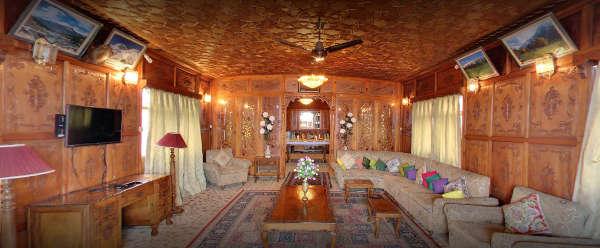Kangri
In a typical koshur household, the kangir continues to be the main, inexpensive source of keeping an individual warm during the winter months. A kangir is made up of two parts. The outer part is an encasement of wicker. Inside, there is an earthen bowl-shaped pot called a kondul. The kondul is filled with tsini (charcoal) and embers. A medium sized kangir holds about a pound of tsini, and its fire lasts for over six hours. Many Kashmiris fill a kangir with toh (chaff) or (guh') lobar (dry cowdung). A kangir is a constant comapnion of Kashmiris during the winter months. It is normally kept inside the Kashmiri cloak, the ph'aran, or inside a blanket if the person does not wear a ph'aran. If a person is wearing a jacket, it may be used as a hand-warmer.
The origin of the kangir is not known. Knowles (1885) makes the following observation:
It has been suggested that the Kashmiris learnt the use of the k'angar from the Italians in the retinue of the Mughal Emperors who often visited the valley, but no reliable particulars have as yet been ascertained.
The mahr'ni kangir is specially made for brides. On the first he:rath (Shivratri) after getting married, a bride brings a specially decorated kangir to her in-laws' house. These have elaborate ornamentation and usually have a silver tsa:lan. The mahr'ni kangir are not terribly comfortable because of their size, but they are extremely attractive and used essentially for decoration.
Mahr'ni Kangir: The tsa:lan looks like a small 'cake server' and is used to turn the coal inside a kangir in order to increase the heat. It is usually tied to a round wicker hook on the back of the kangir. The expensive kangri have silver tsa:lni with silver chains. An inexpensive kangir has a wooden tsa:lan attached by a string.
The sur' kangir is a small kangir specially made for small children. These vary in their size. The kondul is a bowl-like pot which holds the tsini, charcoal, and tyongal. The kondal (plu.) vary in size according to the size of the kangir. The term tsini means charcoal in general, but for the kangri, a special type of charcoal is used. People usually prefer charcoal of bo:ni (chinar) leaves.


